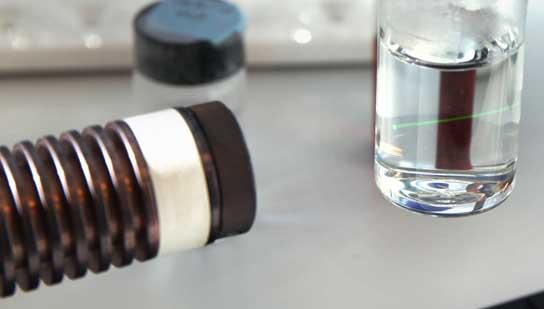
JRC scientists contributed to the development of an advanced data analysis method enabling the retrieval of thermodynamic and structural parameters of nanoparticle-proteins complexes. This is particularly important for the nanoparticle technology applied to medicine.
The interaction of nanoparticles with proteins has been studied for nearly three decades because of its extreme relevancy in the fields of environmental science and toxicology. However despite of these large efforts there is still a lack of experimental information regarding crucial thermodynamics and structural parameters of such complex systems.
The study performed by JRC scientists in close collaboration with researchers from Italy, France and the US demonstrates for the first time that both thermodynamic and structural parameters of nanoparticle-protein complexes can be retrieved with a high degree of confidence. This is done by combining small angle scattering experiments using both neutrons and X-rays. To produce the unprecedented results obtained in the study, an advanced data analysis method was developed that enables to directly simulate and fit a whole set of data collected with different protein and nanoparticle concentrations using a Small Angle X-ray Scattering (beam-line ID01 of the European Synchrotron Radiation Facility (ESRF), Grenoble, F) and Small Angle Neutron Scattering (PACE instrument at the Laboratoire Leon-Brillouin (LLB), CEA-Saclay, Gif-sur-Yvette, F).
This represents a key step towards the full understanding of these aspects, which are crucial in almost all nanochemistry areas, particularly in view of the application of bio-applications of nanoparticles. The study could directly prove, indeed, that: i) the interaction of 30 nm Au nanoparticles (synthesized in the Nanobiotechnology Laboratory of JRC,) with human serum albumin is described by the Hill cooperative model for adsorption; ii) the protein corona in this case is a soft one; and finally iii) the stoichiometry of the Au@BSA complex is 1:100, with the formation of a complete protein monolayer on the Au nanoparticle.
Read more in: F. Spinozzi et al. "Structural and thermodynamic properties of nanoparticle-protein complexes: a combined SAXS and SANS study", Langmuir 33 (2017), 2248–2256, doi:10.1021/acs.langmuir.6b04072
Related Content
Details
- Publication date
- 10 May 2017
